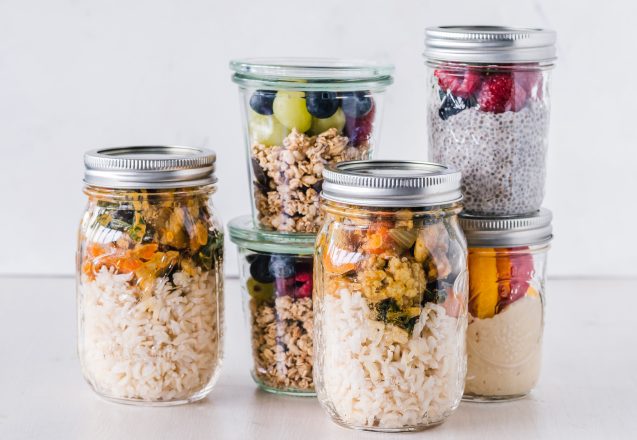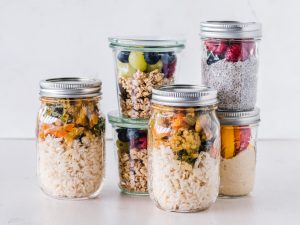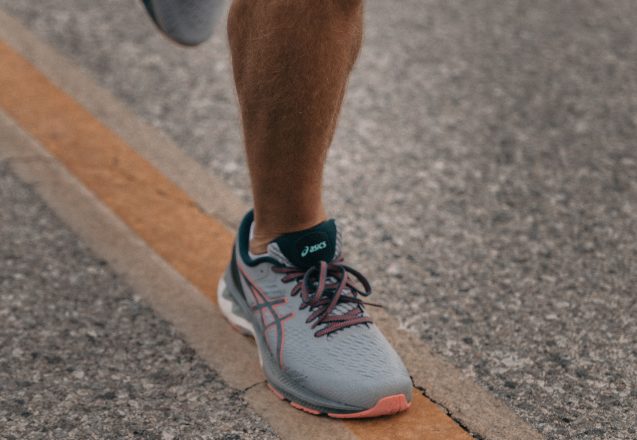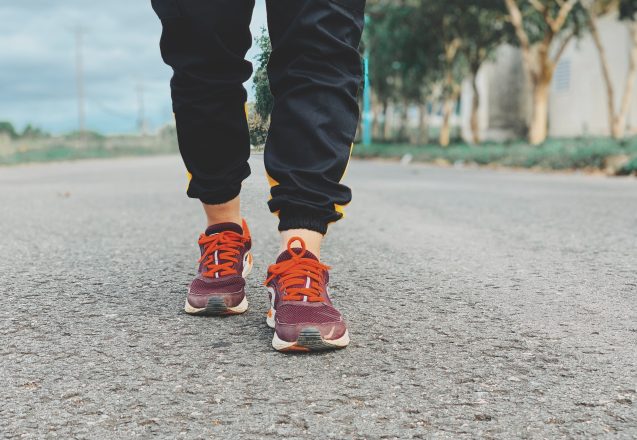Healthy Ways To Boost Energy
 Whether you workout to become healthy, look better or feel better, one thing is certain, it can boost your energy level. It’s one of the reasons people workout. If you’re out of shape, everything is more difficult. That can tire you out quickly. Exercise also helps you lose weight. Losing extra pounds can also bring relief from premature exhaustion. Think about it. If you’re 20 pounds overweight, it’s like carrying a 20-pound weight around all day. Exercise helps you build muscles, improve endurance and lose weight. It makes a significant difference.
Whether you workout to become healthy, look better or feel better, one thing is certain, it can boost your energy level. It’s one of the reasons people workout. If you’re out of shape, everything is more difficult. That can tire you out quickly. Exercise also helps you lose weight. Losing extra pounds can also bring relief from premature exhaustion. Think about it. If you’re 20 pounds overweight, it’s like carrying a 20-pound weight around all day. Exercise helps you build muscles, improve endurance and lose weight. It makes a significant difference.
Exercise is also a stress buster.
If you’ve already started a workout program, you probably are screaming at the computer, noting you were exhausted after working out. It probably was especially true during the first few weeks of exercise. Initially, you will feel exhausted but that didn’t last long. You probably also noticed that after a hard workout, you felt at ease and free of the tension that built up during the day. That’s because exercise burns off the hormones of stress that cause changes that make you feel exhausted, draining you of energy and depriving you of sleep.
You can get your energy from the food you eat.
Try some fruit, the juicier the better. Fruit is high in sugar, but has lots of fiber, which slows the amount of glucose that enters the bloodstream. Rather than spiking blood sugar and having that roller coaster type of energy that rises fast and drops faster, you’ll get a boost of energy and if the fruit is juicy, like watermelon, you’ll get the benefits of more hydration and additional nutrients. Have some fun in hot weather by freezing grapes. They’re ready to become a cold, delicious snack. To maintain a longer stream of energy combine fruit with a source of protein, such as apple slices and peanut butter or cheese.
Stay hydrated.
Carry water with you and sip it throughout the day. Even mild dehydration can cause you to feel exhausted. The next time you’re out of energy, get a cold bottle or glass of water. You’ll be amazed at how quickly you’ll feel more awake and energized. The older you, the harder it is to stay hydrated. The sense of thirst and volume of water in the body decreases as you age.
- Caffeine-containing products can give you a boost. Green tea without sugar is a good choice because it has many beneficial phytochemicals. Black coffee is also another option. Avoid soft drinks. They contain ingredients, such as sugar, that lower your energy level.
- Get more sleep. Getting more sleep is probably the first thing you should do to boost your energy level. Set up a sleep schedule and stick with it.
- Exercise also helps boost your energy because it aids in improving your posture. When you’re walking tall, you aren’t fighting gravity every step and forcing muscles to work to keep you upright. Your body is aligned so it takes less effort.
- Sunshine can improve all areas of your health, including boosting energy. Sunshine increases serotonin levels, that improves your mood, and reduces stress and depression.
For more information, contact us today at Next Level Fitness



 Probably the first on the list of healthy shopping tips for the grocery is to always eat before you go. While the family-size Doritos or big bags of M&Ms will still look good, you’ll be full enough to resist buying them. If they aren’t in the house, you’ll be far less likely to eat them. With that said, also remember to include on your list some options for healthy snacks. They’re just as important for weight loss as they are for good health.
Probably the first on the list of healthy shopping tips for the grocery is to always eat before you go. While the family-size Doritos or big bags of M&Ms will still look good, you’ll be full enough to resist buying them. If they aren’t in the house, you’ll be far less likely to eat them. With that said, also remember to include on your list some options for healthy snacks. They’re just as important for weight loss as they are for good health.
 People who come to Next Level Fitness in Irvine, CA, know that they’re getting more than a gym. One benefit offered is nutrition education. Eating healthy is just as important, if not more important, than exercise. Knowing the healthiest foods can only help you if you eat them, but too often, life can become too busy and overwhelming. That’s often when people opt for fast foods and unhealthy, but quick, options. If you choose to meal plan you won’t have that problem. You’ll have meals ready to heat and serve during the busy work week in less time than it takes to get drive-through food.
People who come to Next Level Fitness in Irvine, CA, know that they’re getting more than a gym. One benefit offered is nutrition education. Eating healthy is just as important, if not more important, than exercise. Knowing the healthiest foods can only help you if you eat them, but too often, life can become too busy and overwhelming. That’s often when people opt for fast foods and unhealthy, but quick, options. If you choose to meal plan you won’t have that problem. You’ll have meals ready to heat and serve during the busy work week in less time than it takes to get drive-through food.
 You may have heard that cardio burns tons of calories and is great for weight loss. That’s partially true, but not the entire story. Just doing cardio doesn’t improve all types of fitness. You need strength, balance and flexibility training, too. Cardio also isn’t the only type of training that burns lots of calories. Strength training will also torch those calories quickly. Strength-building also has other benefits that make it a great option for your weight loss program.
You may have heard that cardio burns tons of calories and is great for weight loss. That’s partially true, but not the entire story. Just doing cardio doesn’t improve all types of fitness. You need strength, balance and flexibility training, too. Cardio also isn’t the only type of training that burns lots of calories. Strength training will also torch those calories quickly. Strength-building also has other benefits that make it a great option for your weight loss program.
 If you’ve never worked out or had a regular program of exercise, it’s difficult to judge how intense, how long and how often to workout as a beginner. It’s one reason working with a personal trainer is so popular, especially when you’re also trying to learn the proper form for each exercise, while building a workout that provides all types of fitness and works all parts of the body. One question is relatively simple to answer. How much time do you spend exercising?
If you’ve never worked out or had a regular program of exercise, it’s difficult to judge how intense, how long and how often to workout as a beginner. It’s one reason working with a personal trainer is so popular, especially when you’re also trying to learn the proper form for each exercise, while building a workout that provides all types of fitness and works all parts of the body. One question is relatively simple to answer. How much time do you spend exercising?
 If getting into shape was one of your 2023 resolutions, you may be one of the hundreds now jogging, sprinting or running in Irvine, CA. Not all running shoes are the same. Walking shoes differ from shoes you use for jogging and those you use for sprinting. Sprinting has explosive movements for a shorter period. It helps burn fat, while building the legs and abs. Because it’s high intensity for a short period, it is a HIIT—high intensity interval training—workout, since the intensity volleys between high intensity and a recovery pace.
If getting into shape was one of your 2023 resolutions, you may be one of the hundreds now jogging, sprinting or running in Irvine, CA. Not all running shoes are the same. Walking shoes differ from shoes you use for jogging and those you use for sprinting. Sprinting has explosive movements for a shorter period. It helps burn fat, while building the legs and abs. Because it’s high intensity for a short period, it is a HIIT—high intensity interval training—workout, since the intensity volleys between high intensity and a recovery pace.
 With all the noise and nerve racking urgency of living in the big city, it’s nice to get back to nature and go on a hike. Hikes can vary from a short day in a nearby wooded area to traveling to a remote location that takes several days to reach. What you bring on a hike will vary by location, the amount of time you spend and the weather in that location. You also need to know how remote the location is and whether there is any type of access to cell networks or supplies along the way.
With all the noise and nerve racking urgency of living in the big city, it’s nice to get back to nature and go on a hike. Hikes can vary from a short day in a nearby wooded area to traveling to a remote location that takes several days to reach. What you bring on a hike will vary by location, the amount of time you spend and the weather in that location. You also need to know how remote the location is and whether there is any type of access to cell networks or supplies along the way.
 Clients come to Next Level Fitness in Irvine, CA, for a number of reasons. Some want to learn the art of discipline, others are looking for an outlet and to have some fun, while still another group come specifically to get fit. Getting fit and staying fit comes from engaging in physical activity, but not everyone does it. Whether it’s dancing, walking or doing Muay Thai, you need to move your body to live a longer, healthier life. There’s no question about that. How much exercise do you need to achieve that goal and while something is better than nothing, is walking enough?
Clients come to Next Level Fitness in Irvine, CA, for a number of reasons. Some want to learn the art of discipline, others are looking for an outlet and to have some fun, while still another group come specifically to get fit. Getting fit and staying fit comes from engaging in physical activity, but not everyone does it. Whether it’s dancing, walking or doing Muay Thai, you need to move your body to live a longer, healthier life. There’s no question about that. How much exercise do you need to achieve that goal and while something is better than nothing, is walking enough?
 Plantains may look like a green or yellow banana on steroids, but they taste quite different from bananas. These 12-inch long banana style fruits taste more like a vegetable than fruit, with a starchy, rather than a sweet taste. While bananas can be eaten raw, plantains need to be cooked no matter what stage of ripeness. Both have a similar nutritional profile, besides looking the same, but plantains are starchy and lower in simple carbs. That’s what makes them good for fat loss, which is one of the benefits of plantains.
Plantains may look like a green or yellow banana on steroids, but they taste quite different from bananas. These 12-inch long banana style fruits taste more like a vegetable than fruit, with a starchy, rather than a sweet taste. While bananas can be eaten raw, plantains need to be cooked no matter what stage of ripeness. Both have a similar nutritional profile, besides looking the same, but plantains are starchy and lower in simple carbs. That’s what makes them good for fat loss, which is one of the benefits of plantains.
 Eating healthy is the key to losing weight. Whole foods are normally lower in calories and higher in nutrition than processed foods, so in most cases, it’s hard to eat too many calories. The caveat is that sometimes you want a sweet treat or a greasy burger. If you go out with friends, it’s hard to resist a New York pizza, burger, wings or cheesecake. Cheat days are meant for those times. While you’re eating more calories, some believe cheat days offer some benefits.
Eating healthy is the key to losing weight. Whole foods are normally lower in calories and higher in nutrition than processed foods, so in most cases, it’s hard to eat too many calories. The caveat is that sometimes you want a sweet treat or a greasy burger. If you go out with friends, it’s hard to resist a New York pizza, burger, wings or cheesecake. Cheat days are meant for those times. While you’re eating more calories, some believe cheat days offer some benefits.